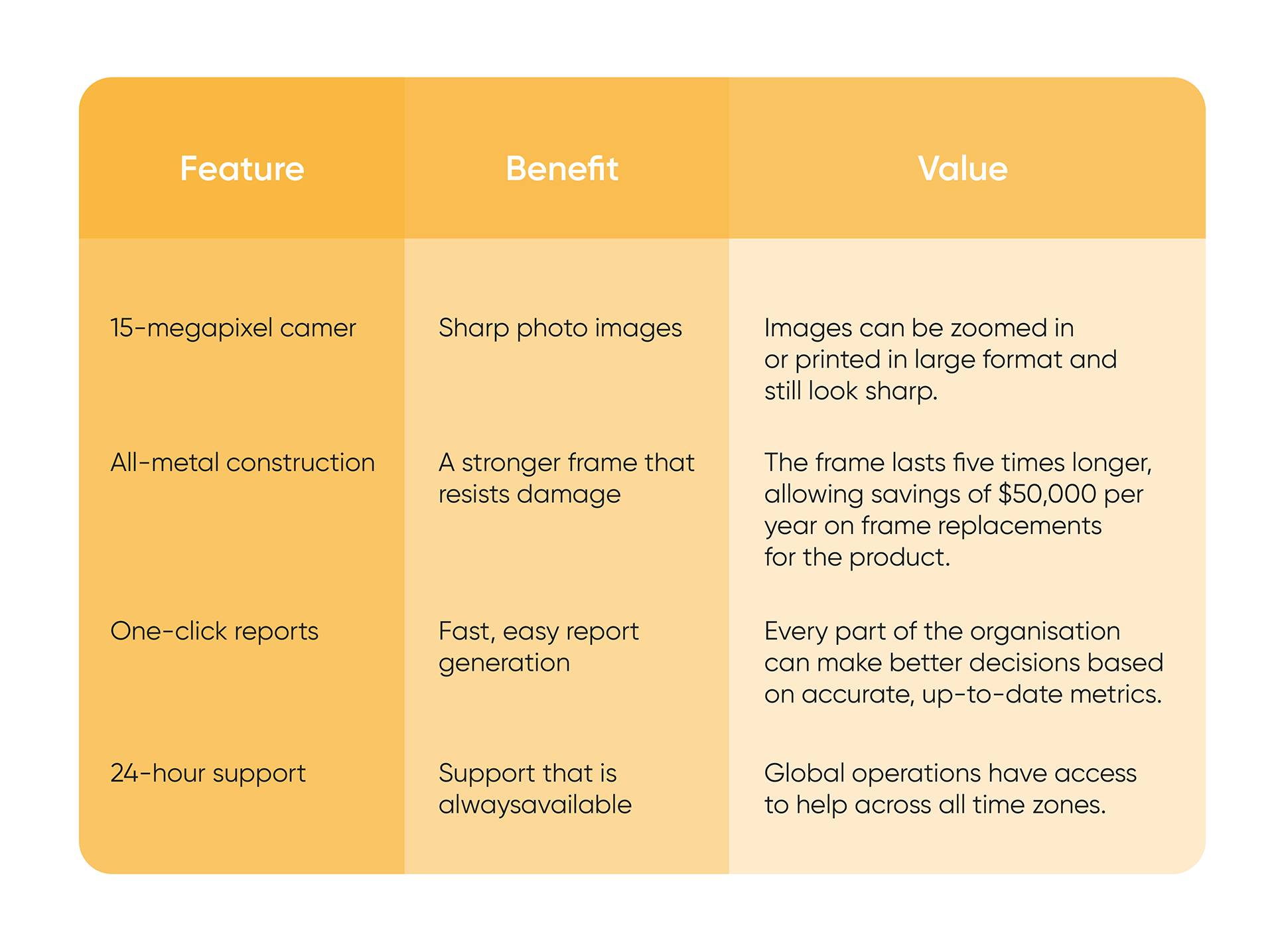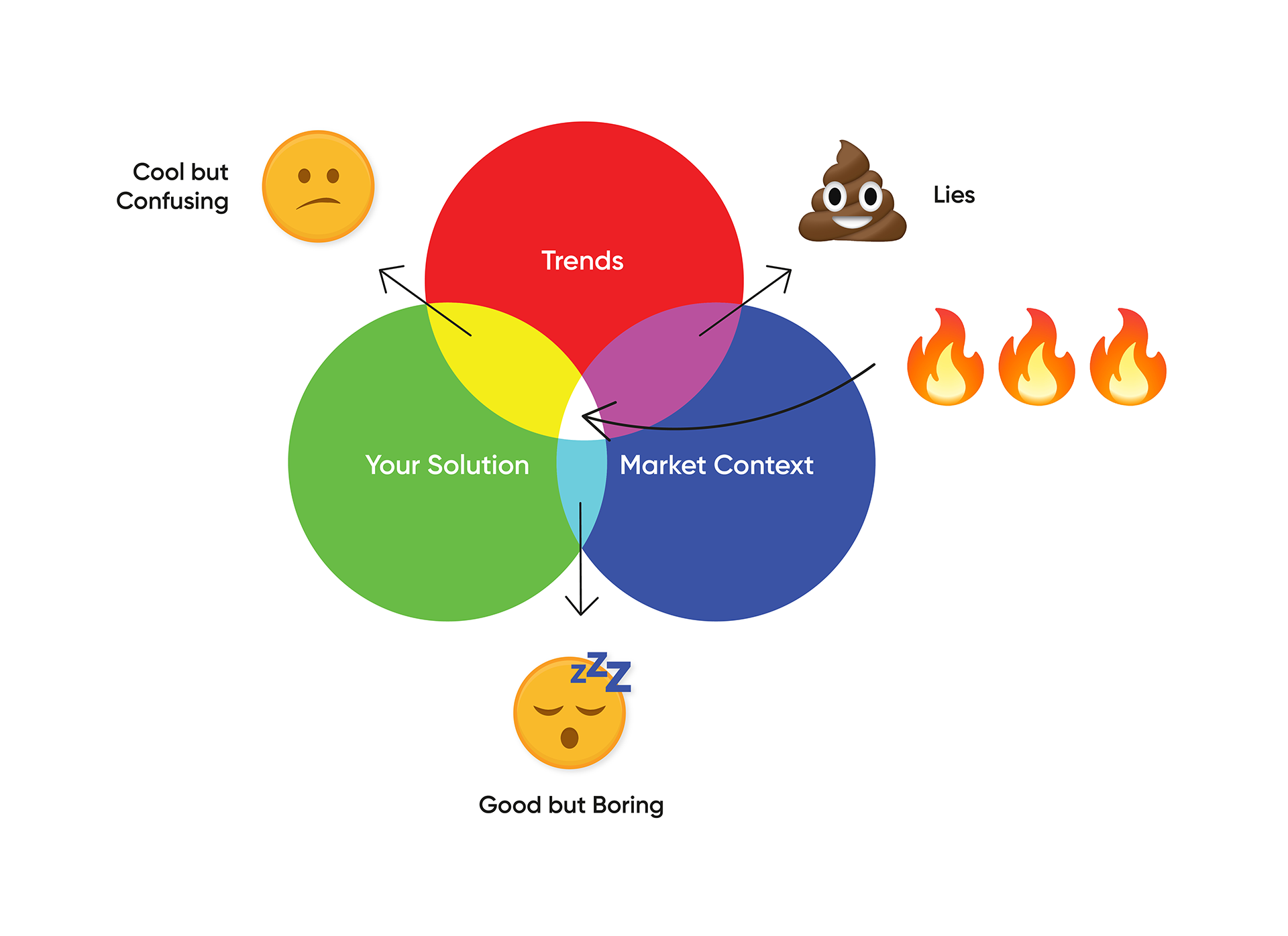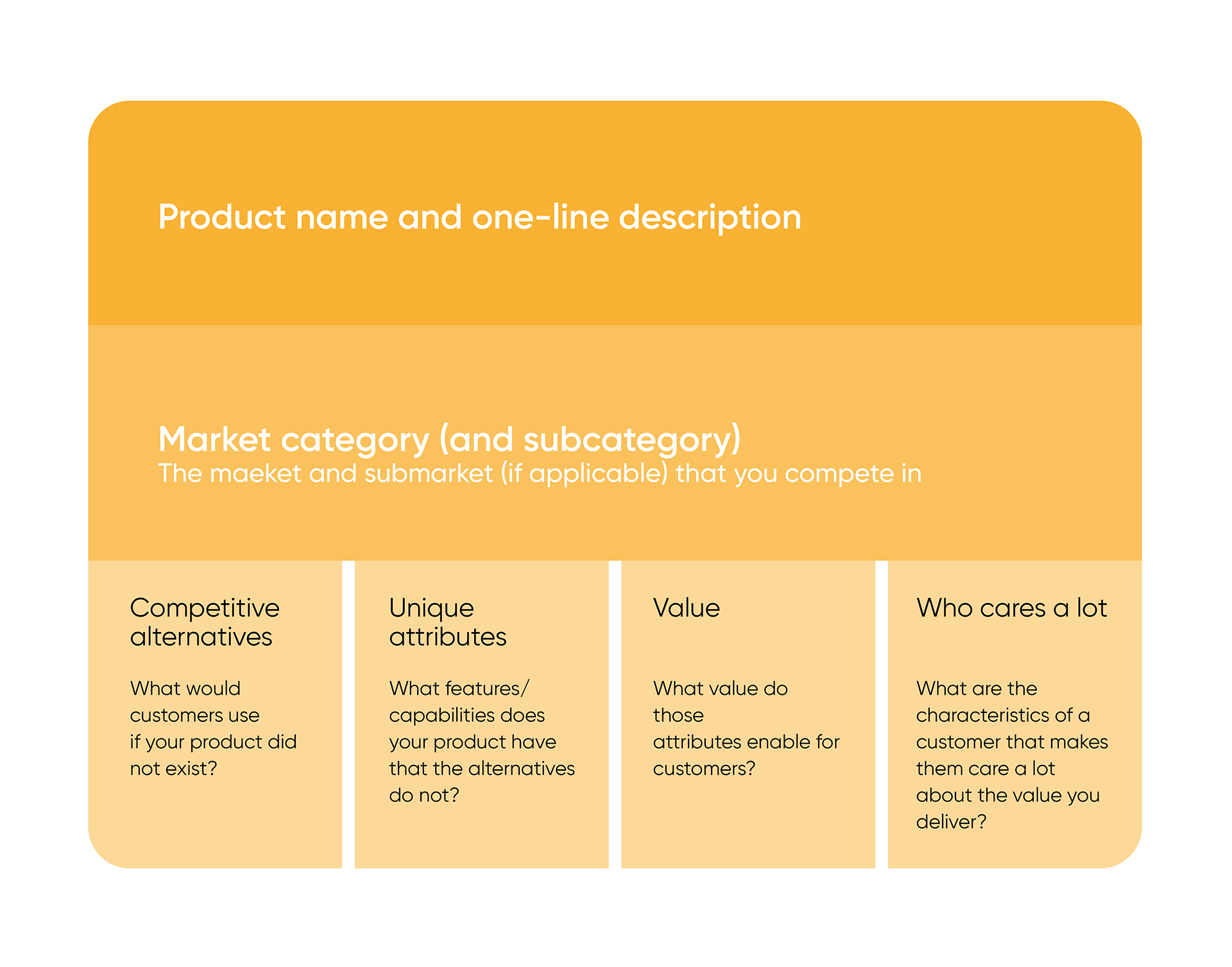Obviously Awesome: Take Your Marketing Strategy to the Next Level
All companies want to grow, but sometimes they don't know how to do it faster. The book Obviously Awesome by April Dunford provides a step-by-step guide on how to market and present your product or service to attract the right customers. If you're feeling stuck and want to grow your business, this book can help.

Obviously Awesome by April Dunford is a must-read book for any business owner or marketer looking to enhance their marketing strategy.
In this article, we will be presenting the key ideas and insights from the book. You'll learn how to differentiate your brand, communicate your value proposition, and ultimately increase your revenue.
This article will provide you with practical tips and actionable advice that you can apply to your own marketing strategy.
So, read on and discover how Obviously Awesome can help you take your business to the next level!
Table of Contents:
Context Can Make or Break Even the Best Product on the Market
5 Components of Effective Positioning
10 Steps for Defining Your Product Positioning
Putting Positioning Into Play
Conclusion
Context Can Make or Break Even the Best Product on the Market
Imagine if one of the world's best cellists played a concert in a subway station, dressed in shabby clothes and playing without fanfare. Would anyone stop to listen? The way, timing, and location in which you present your product play a crucial role in the impression and interest you generate among potential customers.
According to Dunford, context is everything when it comes to marketing. Even the best product can fail if it's not presented in the right context.
So, whether you're a virtuoso cellist or a budding entrepreneur, remember that the context in which you present your product or service can make all the difference.

5 + 1 Components of Effective Positioning
To successfully introduce a new product to customers, it's essential to create the right context. Customers need to understand what the product is, who it's for, and why they should care. This is where a strong marketing position comes in.
Let's see which components need to be carefully considered and crafted to create a marketing position that resonates with your target audience:
1. Competitive alternatives
Consider the alternative choices customers would make if your product or service didn't exist. It's not limited to direct competitors. An alternative product to the new Honda CR-V could also be a bicycle or a bus. By understanding these alternatives, you can better assess your value proposition.

2. Unique attributes
Identify the distinctive features and capabilities that set your offering apart from the alternatives. While your competitors may offer certain features, focus on what truly differentiates you and meets the needs of your customers. Remember, customers may not have in-depth knowledge about competitors, so emphasize what matters most to them.
3. Value (and proof)
Evaluate the benefits that your unique attributes can deliver to your customers. However, it's essential to understand that perceived value is subjective and depends on the customer's perspective. Providing fact-based proof of the value you offer can further strengthen your positioning.
4. Target market characteristics
Identify the characteristics of your target market segment that align with the value you deliver. Rather than trying to appeal to everyone, concentrate on a specific group of buyers who highly value what you offer. Look for clients who make decisions quickly, appreciate your value proposition, and are willing to advocate for your brand. Begin by defining classic market characteristics and gradually narrow your focus to gain a competitive edge.
5. Market category
Clearly define the market category in which you position yourself to help customers understand the value you provide. By associating your product with a specific market category, you help customers form expectations about its functionality and benefits. For instance, positioning your product as a CRM software automatically sets certain assumptions about its features and capabilities.
+1. Relevant trends
Stay attuned to relevant trends that your target customers understand and find interesting. These trends can provide additional relevance to your product or service in the present moment. By adapting to market changes and incorporating trend-relevant features, you can ensure your offering remains attractive and aligned with customer expectations.

By considering these five components of effective positioning, along with monitoring and leveraging relevant trends, you can refine your marketing strategy and enhance your ability to attract and retain customers.
10 Steps for Defining Your Product Positioning
In order to establish a strong product positioning, it is crucial to follow a systematic approach that covers all the necessary components.
By going through these steps, you can effectively shape your product's image in the market:
1. Know Your Happiest Customers
Begin by identifying your happiest customers—the ones who understand your product quickly and become raving fans. They hold the key to understanding your product's unique value proposition.
If you're just starting out and have no customers yet, consider conducting product tests while keeping an open mind. Remember, you are positioning your product for customers, not investors. Focus primarily on your product, especially if you have only one offering.
2. Form a Positioning Team
Engage representatives from various important divisions within your organization to contribute to the positioning process. Each team member brings a unique perspective and insights to the table, enhancing the overall effectiveness of your positioning strategy. Involving your team ensures that they embrace the result and are aligned with your product's positioning.

3. Embrace a Common Positioning Vocabulary
To foster innovative thinking and explore new perspectives, it is essential to set aside preconceived notions. Adopt a common positioning vocabulary that enables you to break free from old ways of thinking about your product. This vocabulary should emphasize finding the best position that aligns with customer needs and discarding any outdated market assumptions.
4. Identify True Competitive Alternatives
Understand that your customers may not view competitors the same way you do. To gain insight into your customers' behavior, try to ask yourself what your best customers would do if you didn't exist.
Once you have a list of possible answers, rank the competitive alternatives from most common to least common. Then, focus on the most common ones and ask yourself what the majority of your best customers would really do.
Finally, group the alternatives into 2-4 macro groups to help you better understand the patterns in your customers' behavior.
5. Define Your Unique Attributes or Features
Effective positioning centers around highlighting what your product does best. Create a comprehensive list of all the attributes and features that make your product unique and differentiate it from the alternatives.
Don't worry if some attributes may not appear advantageous to everyone. Collect as many unique attributes as possible and provide evidence of their superiority. Focus on attributes that influence customers' consideration of your product, rather than those related to retention.
6. Map the Attributes into Value Clusters
Customers care about how product features translate into tangible benefits for them. Analyze each attribute and identify the value points it offers. By grouping related attributes together, you can identify overarching themes that resonate with customers. Condense the list of attributes into one to four powerful value patterns that communicate the benefits clearly and concisely.

7. Determine Your Key Customer Segment
Once you figured what value you provide versus other alternatives, you can look at which customers really care a lot about the value. Move beyond traditional demographic segmentation and consider additional factors such as customer preferences, brand affiliations, buying behaviors, or specific needs.
Narrowing your target market will make your sales easier. Best-fit customers buy faster, don’t ask for discounts, and often become your brand’s ambassadors. Target as much as can. But remember, your target market should be large enough to help you reach your sales goals.
8. Find the Right Market Frame of Reference
Choose a market frame of reference that aligns with your product's strengths and resonates with your target customers.
Take the following under consideration:
- Use abductive reasoning: Isolate your key features and their values and ask yourself “What types of products typically have those features?”
- Examine adjacent (growing) markets: There are usually overlaps. Pay attention to those adjacent markets that are growing quickly. But be careful - chose them only if it makes your strengths obvious.
- Ask your customers. Just be aware that your customers chose your product in a specific market. They might still see you there.
By choosing a market, you are giving your prospects clue about your key features, competitors, prices, and benefits.

When entering a market, you need to choose a strategy. You can either enter an existing market or create a new one. If you choose to enter an existing market, you can try to win it all or cut a slice of it.
Here are three strategies for getting into a new market:
Strategy “Head to Head” (Win the whole market)
With this strategy, your goal is to become the leader and win the entire market. You'll compete against established players in a defined industry, targeting well-educated customers who understand product nuances.
Position your product as superior across all attributes, aiming to be the top choice for most customers. Note that this strategy is more challenging for new products or small businesses unless there is no dominant leader. Constantly reinforce your superiority as the leader or beat the leader at their own game if you're challenging them.
Strategy "Big Fish, Small Pond" (Positioning to win a subsegment of an existing market)
This strategy focuses on winning a specific subsegment of an existing market where the rules differ slightly, giving your product a competitive edge. Start by capturing a smaller market share and gradually expand your influence, eventually challenging the category leader.
Word-of-mouth marketing thrives within tightly defined market subsegments. Narrow down your target market to align with your sales goals and communicate how your product addresses the unmet needs that the market leader overlooks.
Strategy "Create a New Game" (Positioning to win a market you create)
By choosing this strategy, you identify opportunities to create and conquer new markets through innovative solutions. Evaluate existing markets thoroughly before venturing into uncharted territory. Aim to generate new demand rather than tapping into existing demand.
Be prepared for the challenge of educating customers and demonstrating the uniqueness of your product. Focus on selling the problem your product solves and the value it provides in order to capture attention. Although it may take time, the potential rewards of pioneering a new market are substantial.
9. Incorporate Relevant Trends (Optional)
Consider incorporating relevant trends that enhance the importance of your product in the current market landscape. Trends can help potential customers understand the significance and timeliness of your offering.

However, be cautious in selecting trends that have a clear connection to your product. Prioritize establishing the link between your solution and the market before integrating trends. If a suitable trend cannot be found, remember that being "boring" while generating revenue is better than pursuing unrelated trends that confuse your audience.
10. Capture and Share Your Positioning
Once you have defined your product's positioning, it is crucial to share it effectively throughout your organization. Develop a comprehensive document that captures the details of your positioning, ensuring it is easily accessible to all stakeholders.
This document should serve as a guiding reference for branding, marketing campaigns, sales strategies, product decisions, and customer success initiatives. By aligning your organization around a shared positioning, you can consistently communicate your product's value to the market.

By following these ten steps, you can establish a strong and unique positioning for your product, enabling you to attract and retain customers effectively.
Putting Positioning Into Play
When it comes to putting product positioning into practice, there are several key steps to follow:
- Translate your position into a Sales story
- Start a definition of the problem our solution was designed to solve.
- Continue by explaining how customers are attempting to solve the problem today.
- Go to describe what the solution should be in a perfect world.
- Introduce your solution and position it in the relevant market category.
- Typically, the discussion flows into talking more about each of the values into how your solution enables that value.
- A complete pitch should also provide guidance on how to deal with the most common objections.
- Marketing team will translate the story into messages.
- Changing the position always starts with sales and marketing, but you need to be ready to get the product development involved and add a couple of missing features. You might also change your pricing.
- Track your position every six months. Everything evolves.
- A sudden change in the competitive landscape could signal a need to adjust your position. Pay attention if a credible, established competitor enters your market.
Conclusion
Obviously Awesome is a valuable resource that offers practical guidance for mastering product positioning.
By understanding customers, identifying unique attributes, and choosing the right market strategy, businesses can differentiate themselves and drive success. The book emphasizes the importance of effective sales stories, marketing messages, and ongoing tracking to adapt to market changes.
Overall, "Obviously Awesome" equips readers with the tools to position products for success and unlock their full potential. We definitely recommend getting the book as it offers engaging and accessible insights into product positioning.











